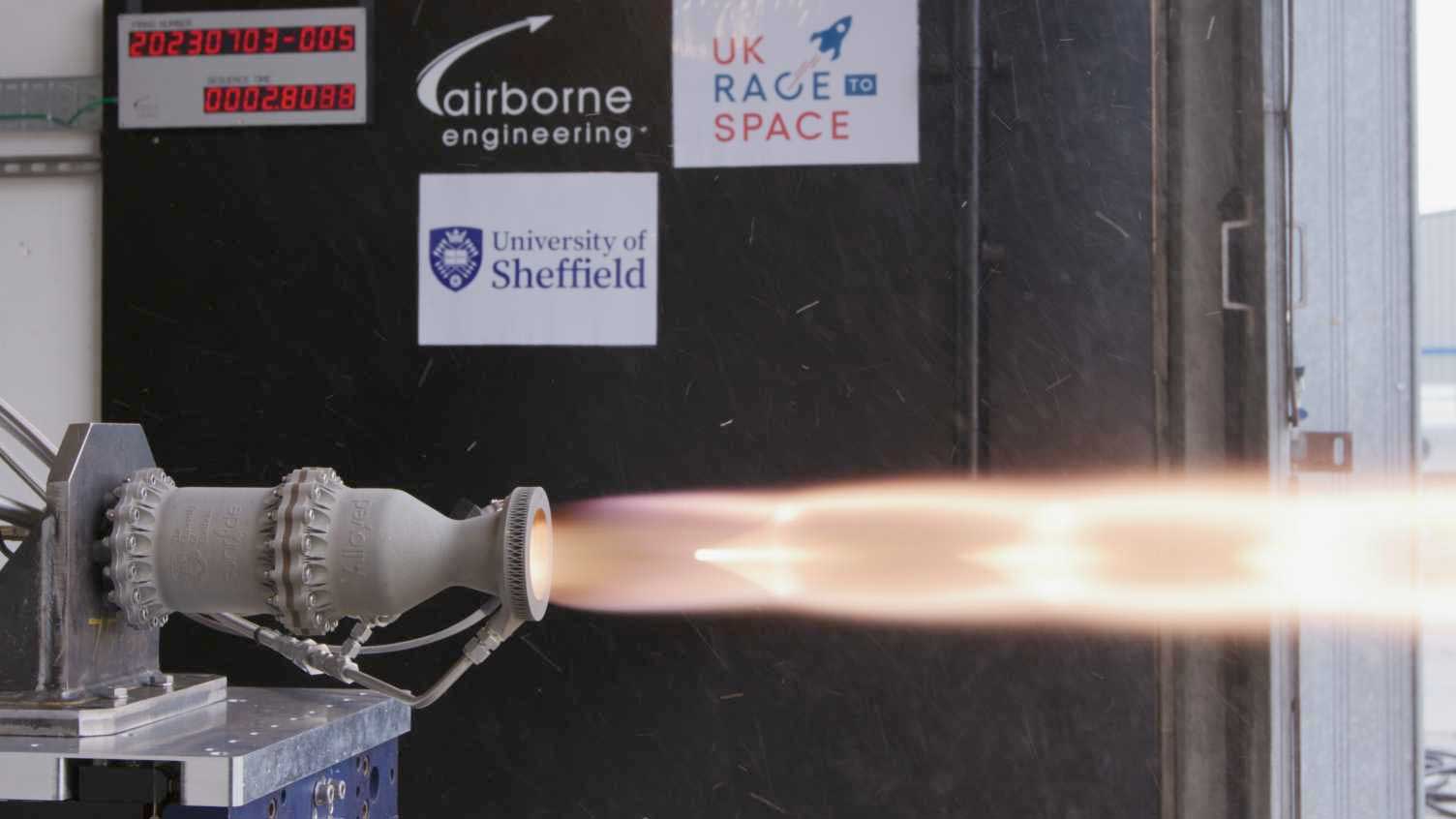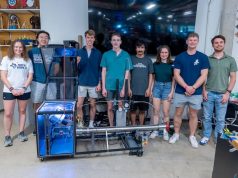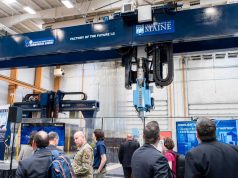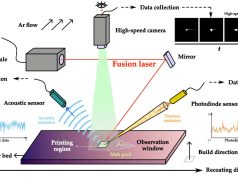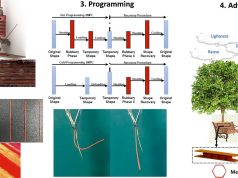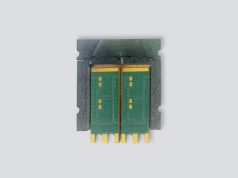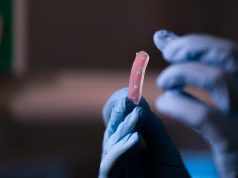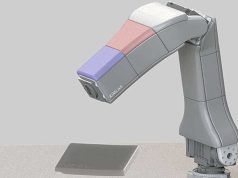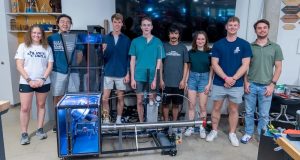A liquid rocket engine – similar to that used by space pioneers such as SpaceX – has been 3D printed by students at the University of Sheffield.
The student-developed “SunFire” engine is the first 3D-printed metal liquid rocket engine in the United Kingdom. This engine, which uses fuel and oxidizer and is rain-cooled, is unique in its performance.
The Sheffield team built the engine as part of the Race to Space competition, in which student teams from around the country tested their engines developed over the past two years. The competition may even have set an unofficial world record for the number of hybrid/liquid rocket engines tested.
Henry Saunders – who led the team last year and is now doing a PhD at the University of Sheffield’s Royce Discovery Centre in 3D printing, said: “The hot fire test of our engine was a day I’ll never forget. From coming up with the idea in a coffee shop with two friends over two years ago, it was amazing when we finally got to fire our rocket engine! Being involved with the SunFire programme provided me with an opportunity to take the engineering science I had learned about in lectures and translate these learnings into a real world practical application.
This for me was where the real excitement and learning reinforcements came from, not just seeing a rocket engine on a PowerPoint slide with some equations next to it, but actually being involved in building a rocket engine from scratch. The equations only get you so far, the real learning, for me, came from trying things, failing and then eventually succeeding.”
The “SunFire” engine is part of a small group of student-built liquid rocket engines in Europe and was developed as part of the University of Sheffield’s Space Initiative. The team, known as “Sunride,” hopes to use the engine to take their own rocket over the Kármán line – the frontier of space.
Engineering graduate and former Sunride Project Manager, Dana Arabiyat – who is now working at Rolls-Royce, said: “Two years and countless hours of hard work later, the successful hot-fire of our engine got us jumping for the most unforgettable five seconds of our lives! This achievement is a testament to the incredible talent and commitment of our Project SunFire team members and leads, and to the tireless mentorship and supervision of Dr Alistair John.”
Dr Alistair John, Deputy Director of Aerospace Engineering at the University of Sheffield, who supervised the team, said: “Additive manufacturing (3D printing) is increasingly being used by rocket companies such as SpaceX as it allows you to build complex, lightweight custom geometries that would not be possible using traditional methods. For example, the cooling channels in our engine, which stop the engine melting despite the 2,000°C combustion temperature, can only be made using 3D printing. Extra-curricular activities such as Sunride and the Race to Space initiative are hugely important as they allow students to apply the knowledge from their degree and push the boundaries of what they can achieve. It is hugely important for the UK space sector that we give our students hands-on, practical experience to develop the skills industry needs.”
Subscribe to our Newsletter
3DPResso is a weekly newsletter that links to the most exciting global stories from the 3D printing and additive manufacturing industry.



